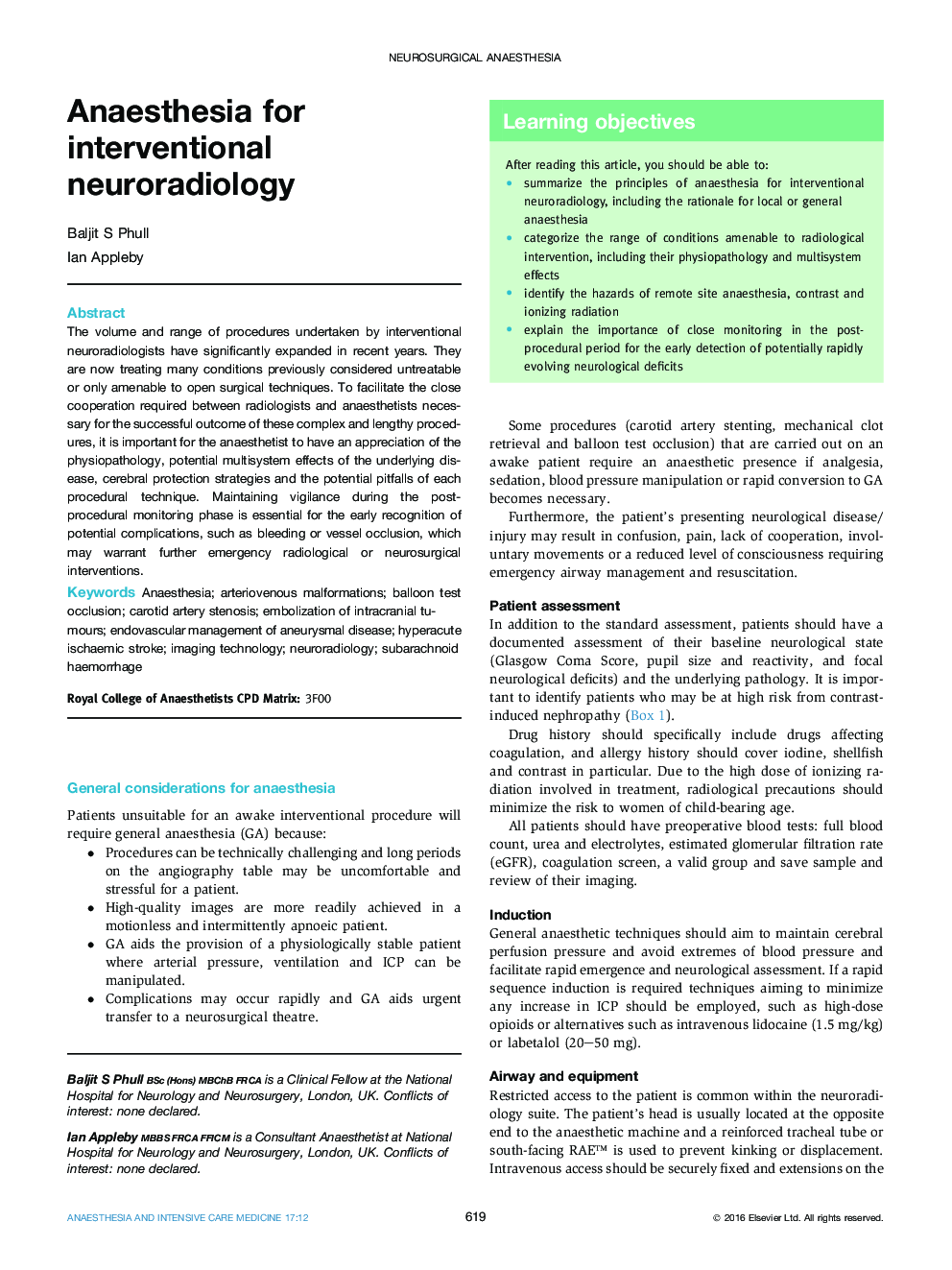| Article ID | Journal | Published Year | Pages | File Type |
|---|---|---|---|---|
| 5580259 | Anaesthesia & Intensive Care Medicine | 2016 | 6 Pages |
Abstract
The volume and range of procedures undertaken by interventional neuroradiologists have significantly expanded in recent years. They are now treating many conditions previously considered untreatable or only amenable to open surgical techniques. To facilitate the close cooperation required between radiologists and anaesthetists necessary for the successful outcome of these complex and lengthy procedures, it is important for the anaesthetist to have an appreciation of the physiopathology, potential multisystem effects of the underlying disease, cerebral protection strategies and the potential pitfalls of each procedural technique. Maintaining vigilance during the post-procedural monitoring phase is essential for the early recognition of potential complications, such as bleeding or vessel occlusion, which may warrant further emergency radiological or neurosurgical interventions.
Keywords
Related Topics
Health Sciences
Medicine and Dentistry
Anesthesiology and Pain Medicine
Authors
Baljit S. Phull, Ian Appleby,
